95th Rifles: 1812 to the Pyrenees (2014)
ジャンル : ドキュメンタリー, 履歴, 戦争
上映時間 : 1時間 35分
シノプシス
After the victory at Salamanca Wellington's Army had mixed fortunes and by the the winter of 1812/3 was back in Portugal. Wellington took advantage of the winter to re-equip and retrain his army for his final master stroke in Spain. In June 1813 Wellington launched his whole army in a rapid push NW towards the Spanish/French border outflanking the French. At Vittoria he beat the main French Army on 21st June and pushed the remainder into the Pyrenees on The French border. He was now able to prepare for the invasion of France. In all these actions and leading the Army were the Light Division containing the 3 Battalions of the 95th Rifles. It was during this period that they had some of their toughest and bloodiest actions that showed them to be an elite formation.
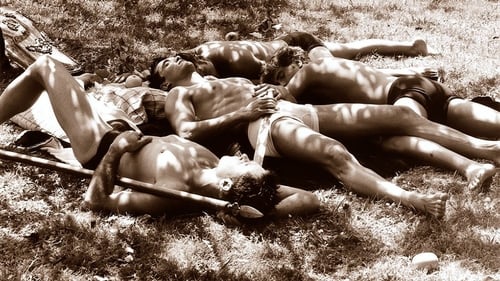
Private Diary documents photographer Pedro Usabiaga working with a variety of amateur models. The audience sees how the relationships between the photographer and the subjects changes during their time together, as well as how the individual photographs begin to take shape. Pedro Usabiaga is a well-established Basque photographer whose chief concerns are figurative photography and whose passion in photographing the Spanish male. In this hour long conversation with the artist we are given entry into that process of selecting models (none of the models he uses for this book to be titled 'Private Diary' are professional, but instead are randomly chosen as Usabiaga observes athletes in action) and then allowed to follow Usabiaga and his crew as they photograph these men in natural settings and natural light.

During the Napoleonic Wars, when the French have occupied Spain, some Spanish guerrilla soldiers are going to move a big cannon across Spain in order to help the British defeat the French. A British officer is there to accompany the Spanish and along the way, he falls in love with the leader's girl.
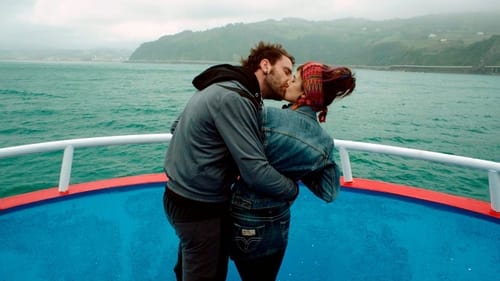
Rafael, a Seville citizen who has never left the Spanish region of Andalucia, decides to leave his homeland to follow Amaia, a Basque girl unlike other women he has known.
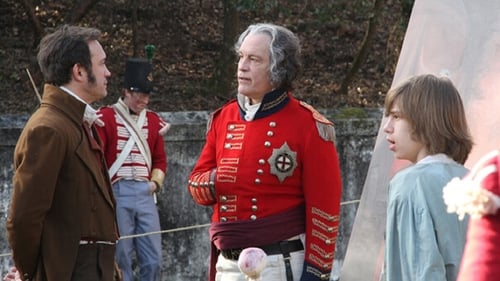
Passionate romance, brutal treachery, and selfless nobility are set against the background of Napoleon’s 1810 invasion of Portugal.

This film gives an overview of Napoleons return to France in 1815 before covering in detail the Battles of Ligny and Quatre Bras. Filmed on the Battlefields in Belgium using re-enaction footage expert Presenters follow the Emperors brilliant initial plan which however soon begins to fall apart due to flaws in the French staff, Napoleons arrogance and the courage and fighting ability of the Allied Troops. Both these battles deserve to be better known but they have been overshadowed by Waterloo the culmination of the Campaign

Twelve short films, twelve portraits of the city of San Sebastian.

Following on from Ligny and Quatre Bras, Part II starts by focusing on the concentration of the Allies on the ridge of Mont St Jean and the plans of the opposing armies. While the guns of the Grand Battery thundered in the centre, French columns bore down on the Hougoumont chateau and farm complex, which protected Wellington's flank held by the Guards and their German allies. Thus began an epic 'battle within a battle' that sucked away valuable troops from Napoleon's main attack, causing Wellington to declare that 'the battle turned on the closing of the gates at Hougoumont'.Meanwhile D'Erlons Corps attempted to bludgeon its way through Wellington's centre, not knowing that the British and Dutch line was in waiting on the reverse slope. Upon seeing the French advance, the British released a disciplined volley of musket fire that checked the French. A further brilliantly timed charge by the Household and Union Cavalry Brigades finally saw the French off.

Following on from Hougoumont and D'Erlon's Attack, Part III starts just as the great battle reaches its crisis point. Marshal Ney launched thousands of France's finest heavy cavalry against Wellington's thinning lines who had already taken a terrible battering on the Mont St Jean Ridge. Wave after wave of armoured horsemen broke against the steady squares of British, Dutch/Belgian and German troops. The crisis, however, took a further turn for the worse as the key bastion in Wellington's centre, the fortified farm of La Haie Sainte, fell to the French onslaught. The way to Brussels was now open and Wellington muttered, 'Give me Blucher or give me night'. With the situation looking bleaker by the second for Wellington and his troops, Napoleon fatefully hesitated to complete the coup de grace as the Prussians had closed in on his right flank at the Village of Plancenoit. Would the Young Guard be able to hold Blucher's men? There was all still to play for.

During the Napoleonic Wars the British Army realised that it needed skirmishers, as a result it raised 2 Rifle Regiments both armed with the icon Baker Rifle. This programme explains how the Riflemen of the 95th Rifles were dressed and equipped. It is an ideal accompaniment to our Series on the 95th Rifles.

This final part takes us through the dramatic events when Wellington’s Anglo-Dutch Army aided by Blucher’s Prussians defeat Napoleon. The French army was outfought and Napoleon was out-generaled by Wellington. At Wavre Grouchy beat the Prussian rearguard before retreating to France. Meanwhile, the Anglo-Dutch army counted the bloody cost of the previous days fighting while Wellington wrote his controversial Waterloo Dispatch and the vengeful Prussians pursued the French towards Paris, leading to Napoleon's abdication and the occupation of the city by the Allies.

95th Rifles 1809 to Salamanca is the second DVD in 95th Rifles trilogy of films and part of The Peninsular Collection from BHTV . The DVD explores the history of the 95th Rifles, who were masters of the battlefield and particularly skilled in skirmishing. Held in high esteem by the French and Allies alike, they played a momentous role in the outcome of the Peninsular War. Following the events set out in the Salamanca DVD, this film serves as a prequel to explain the years leading up to the Battle of Salamanca, starting with the aftermath of Sir John Moore’s retreat to La Corunna in the winter of 1808/1809.

Due to the hostile terrain of the Iberian Peninsula Siege Warfare took on an importance here more than anywhere during the Napoleonic Wars. For the French in particular fortresses and fortified towns were the only places they could guarantee the safety of their logistics from the Spanish and Portuguese guerillas. If Wellington was going to liberate Portugal and Spain he would have to overcome these fortified locations. This film looks at the British and French experience during this period and uses the the great sieges of Ciudad Rodtigo and Badajoz to illustrate how both defence and attacks were carried out . The BHTV team use footage from Spain, re enactments, maps and models to bring this much neglected aspect of the Peninsula war to life.

Portrait of a Knight is a musical romance about the way in which historic ideals inform contemporary urban life. Rachel is a young archivist living and working in Wellington, New Zealand. Feeling alone and disconnected from life, she projects her romantic fantasies onto the paintings she loves, until one day her song brings Reginald - a Knight of the Realm - to life. His carefree innocence and zest for life begin to open Rachel up to the beauty around her, but the fates have a way of making trouble when miracles occur...
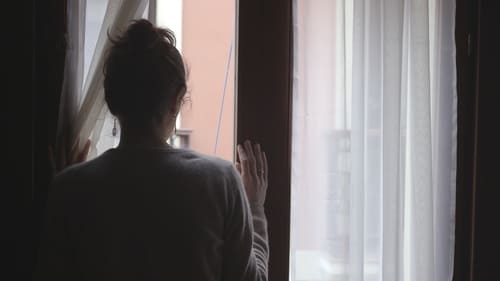
Donostia-San Sebastián, Basque Country, Spain, 2011. Maider, a filmmaker, moves to the very same flat where pedadogist Elbira Zipitria Irastorza (1906-1982) clandestinely established the first ikastola, a Basque school, under the harsh regime of dictator Francisco Franco. Despite of her pioneering work, developed throughout thirty years, her story is not well known, so Maider, intrigued, begins to research…

A peculiar walk through the Basque city of San Sebastián along twisting roads never traveled by guidebook users.

The story of a married American couple who go to the San Sebastian Film Festival. They get caught up in the magic of the festival, the beauty and charm of Spain and the fantasy of movies. She has an affair with a brilliant French movie director, and he falls in love with a beautiful Spanish woman who lives there.
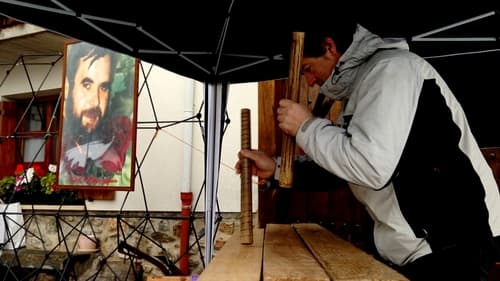
Donostia-San Sebastián, Basque Country, Spain, November 26th, 1985, at night. Mikel Zabalza, a young bus driver, is arrested along with other people by the Guardia Civil as part of an operation against the ruthless terrorist gang ETA. When the other detainees are released, they denounce that they have been brutally tortured in the Intxaurrondo facilities. Besides, Mikel is not among them: Mikel has disappeared.

Dealing heavily with perceptions of time, Aeon documents the urban cityscape as Wellington transforms through a zen-influenced eternal cycle of birth, life, death and rebirth within a 24-hour period.









